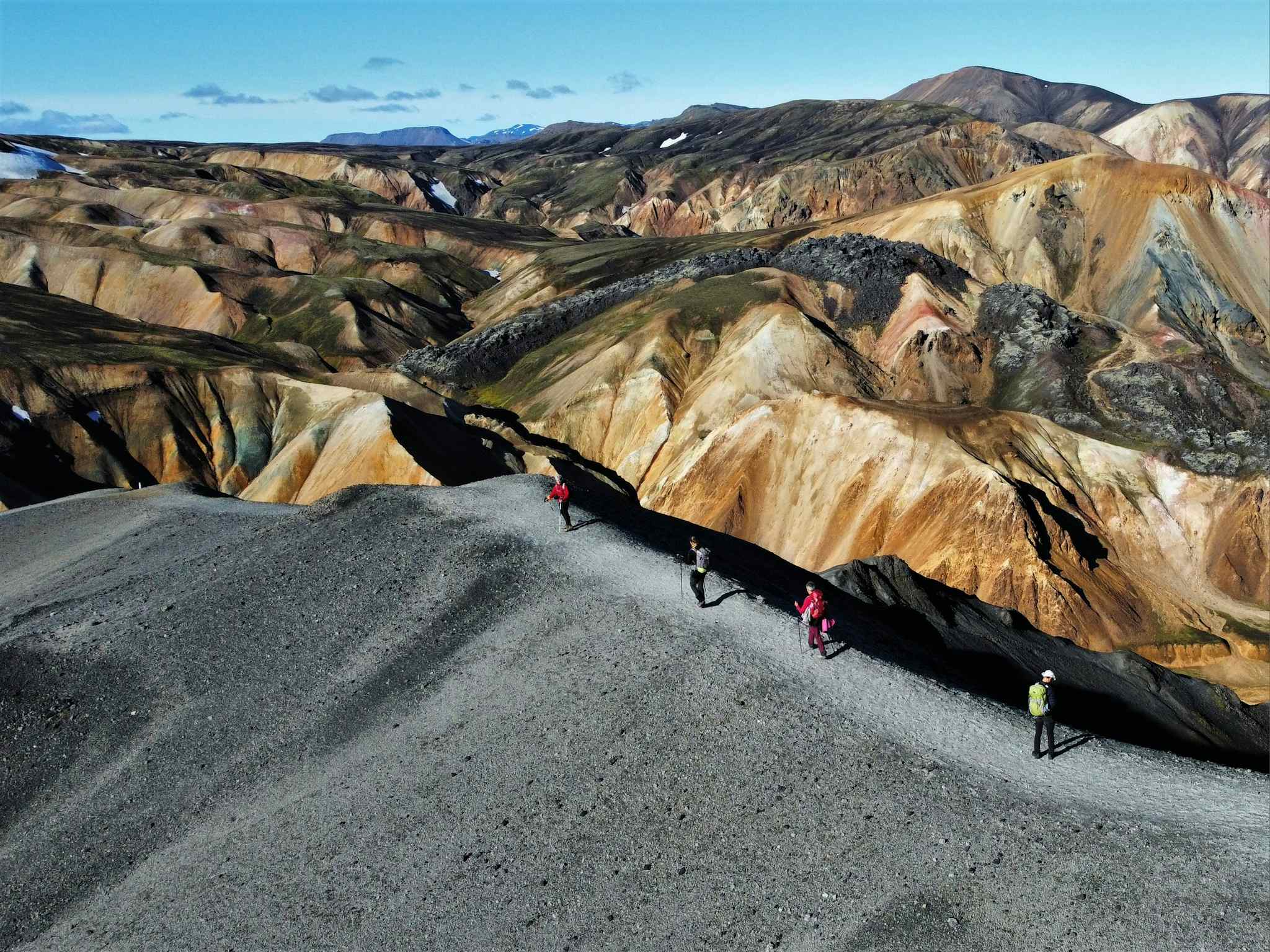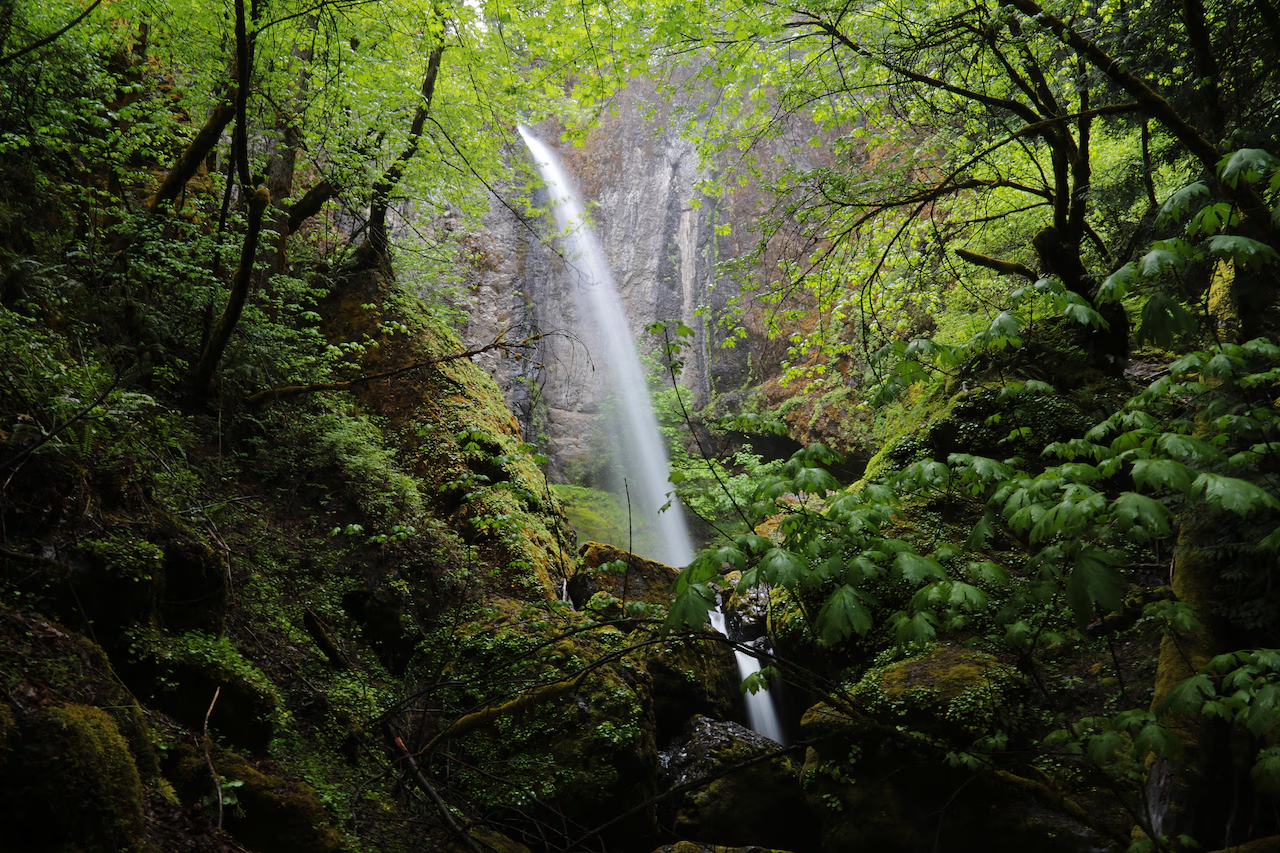There’s a certain magic to hiking a trail that ends in a hidden waterfall. The anticipation builds with each step, the trail winding through dense forests, moss-covered rocks, and the occasional birdcall. And then—suddenly—the sound of cascading water grows louder, the spray kisses your face, and you discover a secluded waterfall that feels like nature’s secret gift. But why do some trails lead to hidden waterfalls? Why aren’t all waterfalls easily visible or conveniently located along well-trodden paths? The answer is a fascinating blend of geology, hydrology, ecology, and human exploration, all working together over millennia.
1. The Geological Story Behind Waterfalls
Waterfalls are nature’s vertical rivers, dramatic displays of water defying gravity. Yet their locations are far from random. Most hidden waterfalls owe their existence to specific geological conditions: rock type, erosion patterns, tectonic activity, and river courses.
1.1 Rock Type and Resistance
Waterfalls often occur where there is a contrast in rock hardness. Hard rock layers—like granite or basalt—resist erosion, while softer layers—such as shale or limestone—wear away more quickly. When a river flows over this combination, the softer rock erodes underneath the hard capstone, eventually forming a vertical drop.
Hidden waterfalls are frequently found in areas where resistant rock is interspersed with softer rock, often deep in forested ravines. Over thousands of years, this combination creates secluded niches inaccessible by easy trails, explaining why some waterfalls remain undiscovered until adventurous hikers venture far from main paths.
1.2 Tectonic Uplifts and Fault Lines
Waterfalls are sometimes born from the Earth itself. Uplifts caused by tectonic shifts can create abrupt changes in river elevation. Similarly, fault lines can fracture rock layers, causing rivers to tumble over newly formed cliffs. These geological upheavals are unpredictable, meaning the resulting waterfalls often appear in remote, rugged locations, rather than near human settlements.
2. Hydrology: The Invisible Hand of Water
Water is the sculptor of landscapes, and the flow of rivers dictates where waterfalls form.
2.1 Seasonal Streams and Hidden Waterfalls
Many hidden waterfalls are seasonal. They depend on rainfall, snowmelt, or underground springs. A stream that seems inconspicuous in the dry season might explode into a powerful waterfall after heavy rain. Trails leading to these waterfalls can be tricky because hikers may follow paths that appear dry or impassable for months of the year, making the waterfall feel like a well-kept secret.
2.2 Underground Springs and Subterranean Waterways
Some waterfalls owe their existence to underground springs. Water emerges from caves or rock fissures, dropping suddenly over a cliff. Because these waterfalls are fed by unseen sources, they often lie in dense forests or deep valleys, requiring a trail to follow the underground watercourse, which is rarely straightforward.

3. Ecological Factors and Hidden Waterfalls
The ecosystem around waterfalls can influence their accessibility.
3.1 Dense Vegetation as a Natural Barrier
Many hidden waterfalls exist in areas with thick vegetation, including rainforests, temperate woodlands, or mangrove systems. Over time, the combination of trees, vines, and underbrush creates natural obstacles that discourage casual exploration. Trails to these waterfalls are often narrow, winding, and occasionally hazardous—designed more by the river’s whims than human convenience.
3.2 Biodiversity Hotspots
Hidden waterfalls often occur in ecologically rich zones where wildlife thrives. The presence of rare plants, mosses, and amphibians may indicate high humidity and constant water spray. These ecosystems flourish in areas that are less disturbed by humans, meaning trails leading to waterfalls are often secondary paths created by animals, erosion, or local explorers rather than by government-maintained hiking systems.
4. Human Exploration and the Allure of Seclusion
Hidden waterfalls are not only products of nature but also of human perception.
4.1 Historical Discovery and Secrecy
Before modern maps and satellite imagery, many waterfalls were known only to local communities, hikers, or explorers. Some trails remain deliberately obscure, either because locals valued the area for its beauty and solitude or because the terrain made creating a safe, official trail impossible.
4.2 Adventure Tourism and Trail Design
Even today, trail designers often balance accessibility with preservation. Building a wide, easy trail to every waterfall could lead to erosion, pollution, or habitat destruction. Instead, some trails are purposefully challenging, guiding hikers through dense forests or steep ravines to reward perseverance with the sight of a hidden waterfall. This intentional design preserves the sense of discovery and protects delicate ecosystems.
5. Microclimates and Waterfall Formation
Hidden waterfalls frequently thrive in microclimates, small pockets of environmental conditions distinct from the surrounding area.
5.1 Shaded Valleys and Moisture Retention
Many hidden waterfalls are tucked into shaded valleys or north-facing slopes that retain moisture longer than sun-exposed areas. These pockets create constant water flow, encouraging moss, ferns, and other moisture-loving plants to grow. The surrounding vegetation can make the waterfall almost invisible from a distance, explaining why trails must wind specifically to reveal it.
5.2 Temperature and Seasonal Effects
Temperature variations can also play a role. In temperate zones, winter snowmelt may feed streams that vanish in summer, only to reappear after rainfall. Hikers may stumble upon a waterfall that seems to appear and disappear with the seasons, adding to its mystique.

6. The Psychology of Hidden Waterfalls
Humans are naturally drawn to secrets and surprises. Hidden waterfalls offer a psychological reward that an easily visible waterfall cannot match.
6.1 The Thrill of Discovery
The effort required to reach a hidden waterfall enhances its emotional impact. Hiking through rugged terrain, navigating fallen logs or slippery rocks, and finally encountering the waterfall triggers a rush of dopamine, associated with exploration and achievement. This is why adventure guides often speak of “waterfalls worth the hike”—it’s not just about the water, it’s about the journey.
6.2 Solitude and Connection to Nature
Hidden waterfalls provide solitude that larger, accessible waterfalls cannot. The absence of crowds allows hikers to experience meditative immersion in nature, listening to the water’s rhythm and observing flora and fauna. This combination of sensory engagement and isolation makes hidden waterfalls emotionally and spiritually rewarding destinations.
7. Cartography, GPS, and the Modern Hiker
Advances in mapping technology have transformed how hidden waterfalls are discovered and accessed.
7.1 Satellite Imagery and Remote Sensing
Modern hikers and researchers use satellite imagery and topographical maps to identify areas with potential waterfalls. Elevation changes, river paths, and forest cover can suggest where a hidden waterfall may exist—even in regions that are otherwise inaccessible.
7.2 Digital Communities and Trail Sharing
Online platforms allow hikers to share GPS tracks, photos, and tips about hidden waterfalls. While this makes previously obscure locations more accessible, it also raises concerns about overcrowding and environmental impact, forcing trail designers to rethink access and conservation strategies.
8. The Science of Erosion and Trail Formation
The trails themselves, leading to hidden waterfalls, are not always human-made—they often follow paths carved by nature.
8.1 Water Erosion and Natural Pathways
Streams and rivers erode soil over centuries, creating natural stairways and gullies. These pathways often become informal trails that guide hikers toward waterfalls. In this sense, the trail is an extension of the waterfall’s natural environment, formed by water and gravity rather than by human intervention.
8.2 Animal Trails as Precursors
Animals frequently create initial paths through dense vegetation. Deer, elk, or smaller forest mammals establish game trails, which humans later adopt. Hidden waterfalls, often located in wildlife-rich zones, may only be reachable by following these natural animal routes, contributing to their secrecy.
9. Cultural Significance of Hidden Waterfalls
Hidden waterfalls often carry cultural, spiritual, or historical significance.
9.1 Sacred Waterfalls
In many cultures, secluded waterfalls are considered sacred sites for rituals, meditation, or pilgrimage. Their hidden nature preserves their sanctity, ensuring that only those who respect tradition or have proper guidance can access them.
9.2 Inspiration for Art and Literature
The mystique of hidden waterfalls has inspired countless poems, paintings, and stories. Artists are drawn to their dramatic isolation and natural beauty, capturing the contrast between rugged trails and delicate cascading water. This cultural recognition adds another layer of fascination to these secluded sites.
10. Conservation and the Future of Hidden Waterfalls
With growing interest in adventure tourism and environmental preservation, the future of hidden waterfalls requires careful balance.
10.1 Environmental Challenges
Hidden waterfalls face threats from climate change, deforestation, and human traffic. Altered rainfall patterns can reduce flow, while poorly managed trails can damage surrounding ecosystems. Preserving the hidden nature of these waterfalls is crucial for both ecological and cultural reasons.
10.2 Sustainable Hiking Practices
Hikers can minimize their impact by staying on designated trails, carrying out trash, avoiding disturbing wildlife, and respecting seasonal restrictions. By practicing sustainable hiking, we ensure that hidden waterfalls remain wild, secluded, and magical for generations to come.
Conclusion
Hidden waterfalls are more than just beautiful landscapes—they are products of geology, hydrology, ecology, and human history, all intertwined. Their seclusion is the result of rock formations, water flow patterns, dense vegetation, animal activity, and cultural choices. Trails leading to these waterfalls are themselves stories, carved over time by nature and exploration.
Reaching a hidden waterfall is a journey of discovery: a combination of physical challenge, mental anticipation, and emotional reward. It’s a reminder that nature reserves its most exquisite wonders for those willing to venture beyond the familiar, proving that some of life’s greatest treasures are not meant to be seen easily—but earned through curiosity, patience, and respect for the wild.























